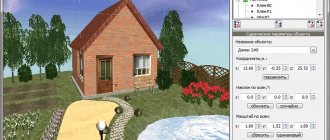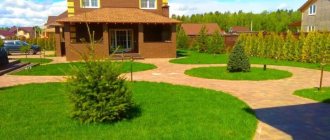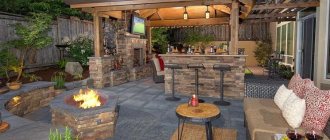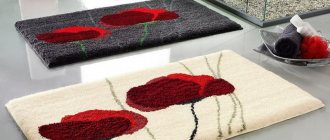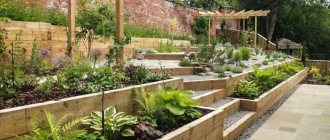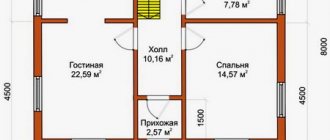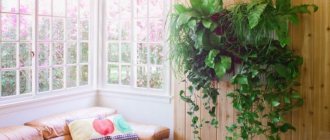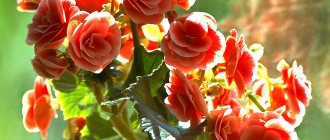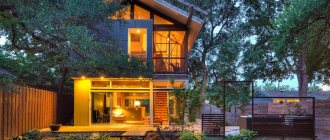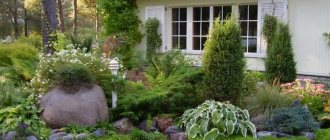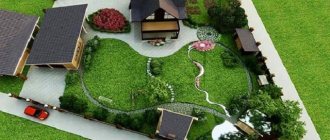One of the most common ways to decorate a garden plot is to decorate it beautifully with flowerpots and pots. Outdoor flowerpots can be of completely different shapes and materials, and their decor can successfully complement the garden composition.
How to choose the right flowerpots for your site?
Since flower pots on the street are designed to decorate the front area, courtyard, staircase, garden paths, seating areas, terrace or porch, they should be chosen based on functionality. A planted area with vegetation or a vacant lot will perfectly complement large flower beds or oblong flowerpots.
It is the dimensions of outdoor flowerpots that need to be taken into account when choosing such a decorative element. It all depends on the total area of the garden or plot. A flowerpot that is too large in a small area will look very intrusive and cumbersome, depriving the place of relaxation of such desired harmony and comfort. A small flowerpot on a long, luxurious garden alley, on the contrary, will get lost. But a pot of the right size will highlight and balance the space.
In the process of decorating a site, you should not get too carried away with bright and catchy decor. The design of flowerpots should not be more noticeable than the flower ensemble planted in it. Vases and pots in calm light shades of cream, white, terracotta, brown, and beige will look more elegant and harmonious in landscape design. If there is decor, it should be as laconic as possible and correspond to the overall stylistic idea of the landscape.
Varieties of flower girls
Pots
They are a container made of plastic, clay, wood or other materials, and are intended for storing flowers and plants. Place pots on the floor, windowsill, furniture, shelves.
With their help, you can create entire compositions of flowers, or place accents throughout the area.
Flowerpots
They differ from pots in that they are intended for hanging. These flower beds have a special mount for ceilings and walls. Flowerpots will help hide the unaestheticness of pots - for example, made of plastic, if the overall interior design is made in eco style. In addition, you can place several flowerpots in it at once - the main thing is that the plants get along with each other.
Thanks to their easy movement around the territory, you can create new compositions, and during bad weather or in winter, transfer plants to the attic or veranda.
Types of outdoor flowerpots regarding material
An equally important part of choosing the right flowerpot is the material of manufacture. The most common are concrete, stone and plastic products. Clay is often used for flower pots. Its plasticity allows you to experiment with unique textures and shapes, but at the same time their surface must be covered with a special glaze to increase resistance to the lowest temperatures and retain moisture.
Flowerpots made of artificial or natural stone are usually placed on stone stands or cabinets and are often decorated with beautiful relief designs. Their main advantages are durability and eye-catching decorativeness. Such pots and flowerpots retain moisture well, which prevents the soil from drying out.
Concrete flowerpots are most often used to decorate large areas. This choice is due to the impressive size of the containers and their heavy weight.
They are made in the form of luxurious large vases. Such specimens look very aesthetically pleasing and noble, and compared to traditional flower beds, this is also a more practical way of planting plants.
Often, outdoor concrete flowerpots are presented in the form of modular containers, the design of which consists of a flower vase made of stone chips (or concrete) and a concrete base. Such products have a fairly long service life, are resistant to water and do not crack due to temperature changes. Also, outdoor flowerpots made of concrete are made using reinforcing mesh, which further enhances their strength.
The most economical option for decorating a garden plot is plastic flowerpots. They can often be seen in colorful rich colors, and in themselves they are a completely self-sufficient decorative product. The cost of such flowerpots is low. Definitely, the main advantage of plastic flower pots is mobility (due to their low weight).
And even those who prefer natural textures and materials purely from an aesthetic point of view can also choose a plastic flowerpot, because thanks to modern technologies, even plastic can imitate a variety of surfaces - stone, clay, etc.
Pots, flowerpots and vases made of plastic perfectly retain moisture, preventing flowers from drying out.
Where is it appropriate to place flowerpots?
In everything regarding the choice of location and type of flowerpot, the owner relies on his taste and preferences. But still, there are general principles that will help you not to be disappointed in your choice over time, when a glaring discrepancy irritates your eyes.
Flowerpots look very harmonious on both sides of the porch and front entrance, inviting you into the house and promising a special cozy atmosphere. It is important to choose a combination of structure and decorative elements.
Wooden buildings, decorated with flowerpots in the form of wicker baskets, tubs made of boards, cuts of tree trunks, will look as organic as concrete or stone (even if it is a good stylization of plastic) flowerpots at the entrance to a house built of brick or lined with stone masonry
Flowerpots near the gazebo, near the summer kitchen, perfectly enliven the landscape. Plants in decorative containers, marking the entrance to the garden path, highlighting areas of the garden, placed along the walls of buildings on wide blind areas will create a unique spirit of any property.
You may be interested in: Types of irises: names, descriptions of varieties and photos, combinations with other flowers
DIY outdoor flowerpot: interesting ideas in the photo
We advise creative, tireless craftsmen and experimenters to make an outdoor flowerpot with their own hands. Unique products can be created from wheelbarrows, old bicycles, wooden boxes, tubs, large dishes, barrels, baskets, etc. It is only important to follow the basic rule - coating surfaces with varnish or drying oil and treating flowerpots with antiseptics.
A real masterpiece can be created from clay. Both decorative white clay and natural clay are perfect for modeling. The first has a number of advantages - it is easy to decorate, hardens quickly, and can be sculpted without a workpiece. In addition, decorative clay does not require firing.
Before you start making an outdoor flowerpot, carefully consider its design. For decoration, you can use cute pebbles, pieces of mirrors, coins, beads, shells, fragments of ceramic tiles for mosaics, etc. All elements must be secured with construction glue or epoxy resin.
Continuous flowering garden of perennials
A flower garden of free-form perennial plants, a real decoration of the garden, requires the least care and attention. How to decorate it beautifully with your own hands?
To prevent mistakes, you must:
- make a list of plants indicating their flowering period (summer, autumn flowers or blooming all summer)
- draw a planting plan taking into account the height and width of the bush of each specimen
- mark a place for a flower garden on the site and evaluate it from the point of view of visibility and background
Popular articles Daylily - a flower of good luck in our gardens
The most popular perennial bulbous plants begin to bloom in the garden in spring: these are unpretentious flowers that reproduce quickly and easily. As a rule, small-bulbous plants (scillas, quinodoxes, snowdrops, white flowers, crocuses, muscari) do not need to be dug up after flowering; they only need to be replanted once every few years. Bulbs are planted in large groups, preferably at least 50 pieces, so that the flowers form a bright spot.
Crocuses are the first spring flowers
In addition to small-bulbous plants, in spring tulips, daffodils, hazel grouse, decorative onions, pushkinias, hyacinths, primroses, hellebores, subulate and splayed phlox, alpine forget-me-nots delight with bright colors.
Tulips and daffodils
Bulbs of tulips, daffodils, hyacinths, and hazel grouse are planted in the fall, and after flowering they are dug up, dried, sorted and stored in a cool place until planted again. Primroses, phloxes, hellebores and forget-me-nots are perennial rhizomatous plants, they are unpretentious and winter-hardy, bloom early and for a long time.
Hyacinths
Doronicum, gravilat, and dicentra bloom in May-June.
Irises of various shades begin to bloom in summer. When planting irises, it is necessary to take into account that they do not tolerate stagnation of water and deepening of the root collar during planting.
Multicolored irises
In June, peonies, aquilegias, chickweed, cyanosis, pyrethrum, aubrieta, oriental poppy, lychnis, lupins, and evening primrose bloom. In July - lilies, carnations, gypsophila, delphiniums, daylilies, monarda, cornflower, roses. In August and September, autumn flowers delight: asters, helenium, gladioli, loosestrife, paniculate phlox, echinacea, chrysanthemums.
Terry peonies
Decorative foliage perennials - hostas, heucheras, brunnera, ferns, tiarella, chistets - highlight the bright beauty of flowering plants.
Hostas and decorative onions
Choosing flowers for outdoor flowerpots
In addition to the flowerpots themselves, the flower arrangement planted in them plays a very important role. Flowers should be selected based on the location and size of the flowerpots. When composing a composition, you need to determine which element of the bouquet will occupy the central position. For outdoor flowerpots, plants with different colors and splendor of buds, height and type of stems are used. In large pots, two or three types of flowers look luxurious, with taller plants placed in the center, and shorter ones closer to the edges.
In oblong flowerpots, the area will be exquisitely decorated with climbing plants bordering the perimeter or circumference, or flowers beautifully falling to the ground. In flowerpots located near the wall, tall specimens are planted closer to the back panel, flowing or low ones - at the front edge.
Typically, plants in outdoor flowerpots are unpretentious and do not require particularly careful care. For full and beautiful flowering, it will be enough to loosen and water them in time. Only some species need to be fed with mineral fertilizers (solutions or granules).
Street flowers in pots as a decorative element of the landscape
Many people want to have a house outside the city. This is an opportunity to spend a weekend closer to nature, in peace and solitude, away from the bustle and crowded streets. An obligatory component of a personal plot is outdoor plants. Someone purchased a building on an already green area and simply made adjustments or additions, but more often the arrangement is done from scratch.
If it is not possible to create a real flower garden, then you can always create a greenhouse from flowers in pots
Not a single design development, created by a professional or an amateur, is complete without flower beds. They make the structure bright and interesting and bring vibrant natural colors into the surrounding design. Flowers are an uncomplicated, unique way to decorate the most modest landscape. And it is accessible to everyone: if the composition of the soil, lack of space or any other reasons do not allow you to set up a flower garden, you can create a real greenhouse from flowers in pots. On the street, it is appropriate to place them on the ground, along paths, benches, gazebos... Or they can be mounted on a fence, pergola, terrace, or even on the wall of a house. The structure entwined with flowering plants looks truly fabulous.
Even if you don’t have a country house, you shouldn’t deprive yourself of the pleasure of being among flowers in the summer. Pots with plants can be mounted on the outside of the balcony, loggia, and even on the window slope. In specialty stores it is easy to find both the containers themselves and various devices for hanging and installation. It is possible to purchase a pot with a ready-made flower, but you can go from a seed or sprout to a blooming avalanche.
Popular articles 9 beautiful varieties of double daffodils
The finished plant option seems simpler only at first glance
It is important to organize adaptation correctly, otherwise the plant will lose its attractiveness. The second way is longer, but with proper care, the beginning of the growing season will bring a lot of pleasure
Flower pots can be used not only in a country house, but also in a city apartment
Unusual solutions for outdoor flowerpots
Plastic and other containers for flowers and plants
Depending on the material, containers for flowers are ceramic, plastic, wooden and metal. Each material has its own characteristics, and planting plants in them should be done differently.
Plastic containers for plants retain moisture for a long time - you can go longer without watering. But they “steam” the roots, and they can only breathe from the surface. At the same time, they are light and durable.
Ceramic containers are best for plants - moisture passes well, since ceramics are hygroscopic, the temperature is optimal, and plant roots “breathe” throughout the entire surface volume. But ceramic containers are fragile and heavy, starting from medium sizes.
Wooden containers are almost as good as ceramic ones, but they don't last long and if they get wet, they also maintain high humidity in the container.
Metal plant containers are the hardest to make. The roots do not breathe in them, and the containers themselves either become very hot or very cold, depending on the weather. When they get warm, the plant is too hot and moisture is lost quickly. When it's cold, the roots are cold as a result, and at the same time constantly damp. Metal containers are durable and medium-heavy.
